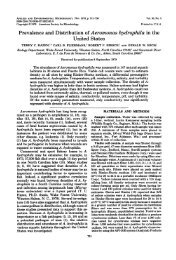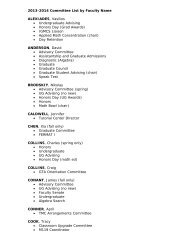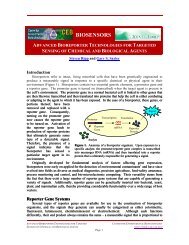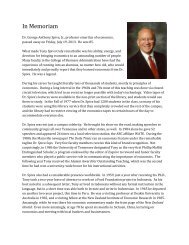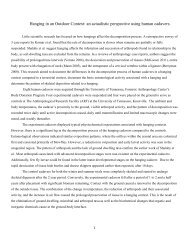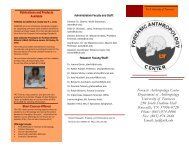Species of Xerula from sub-Saharan Africa
Species of Xerula from sub-Saharan Africa
Species of Xerula from sub-Saharan Africa
You also want an ePaper? Increase the reach of your titles
YUMPU automatically turns print PDFs into web optimized ePapers that Google loves.
Fungal Diversity<br />
taxa sheltered under Pegler's (1977) macroscopic<br />
description, it is difficult to tease apart<br />
that which applies to each taxon.<br />
Specimens examined: KENYA, Central Prov.,<br />
Kiambu Dist., Muguga (EAAFRO), 13.III.1968, coll DN<br />
Pegler (K47, as O. radicata var. africana) [K(M)<br />
129460] [annot. H. Dörfelt, 1982, as X. radicata];<br />
Central Prov., Nairobi Dist., Thika, Thiba River,<br />
16.III.1968, coll DN Pegler (K112, as O. radicata var.<br />
africana) [K(M) 129456] [annot. H. Dörfelt, 1982, as X.<br />
radicata].<br />
7. <strong>Xerula</strong> tetrasperma R.H. Petersen, sp. nov.<br />
(Figs 36-40)<br />
MycoBank: 511157<br />
Basidiomata collybioidea, gracilis, radicata. Pileo<br />
12-47 mm lato, plano ad conicoumbonato, brunneo<br />
(<strong>sub</strong>inde albo), innate radialiter striatulato. Lamellis<br />
albis, adnatis, <strong>sub</strong>ventricosis, non-marginatis. Stipite -<br />
140 × 2-5 mm, apice albis, deorsum brunneis,<br />
minutulifurfuraceis; pseudorhiza expansis, betiformis,<br />
atrobrunneis.<br />
Pileocystidiis 25-80 × 9-27 µm, pedicellatis,<br />
clavatis ad sphaeropedunculatis, fibulatis, hyalinis ad<br />
olivaceo-brunneis. Pleurocystidiis 106-200 × 20-30 µm,<br />
pedicellatis, fusiformicapitulatis cum apex extensis,<br />
hyalinis, fibulatis. Basidiis 52-71 × 14-24 µm, late<br />
clavatis, tetrasporis. Basidiosporis 15-21 × 10-15 µm<br />
(E m = 1.41; L m 17.9 µm), ovatis ad <strong>sub</strong>limoniformis.<br />
Cheilocystidiis 31-130 × 7-28 µm, pedicellatis, elongatodigitatis,<br />
tenuitunicatis, fibulatis. Caulocystidia 26-220 ×<br />
7-22 µm, digitatis ad late cylindricis, tenui- ad<br />
crassitunicatis, fibulatis.<br />
Holotype: TANZANIA, Southern<br />
Highlands Region, Iringa District, Mufindi,<br />
Lulando village, Lulando Forest Reserve,<br />
lower montane forest, Degree Ref. System<br />
Square: 08 35 DA, 15.XII.1990, leg. Tiina<br />
Saarimäki et al, no. 537 (H).<br />
Basidiomata collybioid, gracile, rooting,<br />
quite similar to those <strong>of</strong> X. kenyae. Pileus 12-<br />
47(-80) mm broad, dark neutral brown (in<br />
herbarium), occasionally white or <strong>of</strong>f-white,<br />
plane with a low, conical umbo, radially<br />
wrinkled, with (or without when white)<br />
delicate, radiating brown-black ridges or lines<br />
extending <strong>from</strong> umbo outward 3-4 mm,<br />
occasionally anastomosing, reappearing near<br />
margin and then widely lacy (i.e. anastomosing<br />
in large web-like pattern), otherwise smooth<br />
with evidence <strong>of</strong> laccate surface, suede-like;<br />
margin thin, sometimes wavy, <strong>sub</strong>tly striate<br />
over lamellae, concolorous with pileus limb;<br />
flesh white, hygrophanous. Lamellae white to<br />
<strong>of</strong>f-white when fresh, ochraceous buff after<br />
drying (i.e. no appreciable necropigment),<br />
adnate with significant decurrent tooth, usually<br />
seceding, somewhat ventricose, up to 6 mm<br />
deep, <strong>sub</strong>distant, nine/cm at margin, in three<br />
tiers, with a fourth tier merely an obscure<br />
raised ridge at the pileus margin; lamellar<br />
margin concolorous with lamellar face when<br />
fresh, after drying somewhat darker and<br />
appearing hygrophanous or occasionally<br />
abruptly delicately marginate to dark brown;<br />
interlamellar region ribbed, not solid hymenium.<br />
Stipe up to 140 mm long, 2-5 mm thick,<br />
flairing somewhat apically, abruptly swollen at<br />
ground line, pr<strong>of</strong>oundly hollow, white apically,<br />
downward pallid brown, minutely furfuraceous<br />
or scabrous with silky sheen; pseudorhiza up to<br />
10 mm thick at widest point, beet-shaped, at<br />
least 14 mm long, dark brown.<br />
Pileipellis involved in copious slime,<br />
constructed <strong>of</strong> a single element. Pileocystidia<br />
<strong>of</strong> umbo (Fig. 36) 25-80 × 9-27 µm, shortly to<br />
significantly pedicellate, usually clavate to<br />
occasionally sphaeropedunculate, occasionally<br />
lobed, firm-walled to appearing thick-walled<br />
(wall occluding pedicel lumen, perhaps by<br />
coagulation <strong>of</strong> protoplasm), perhaps obscurely<br />
clamped; contents homogeneous, commonly<br />
with or without two small amorphous dark<br />
bodies (?nuclei), hyaline to obviously<br />
pigmented olive tan; septum at pedicel base<br />
usually appearing thickened; pileicystidia <strong>from</strong><br />
pileus margin (Fig. 36) similar, 36-67 × 11-27<br />
µm, pedicellate, sphaeropedunculate (rarely<br />
clavate). Pleurocystidia (Fig. 37) sparsely to<br />
densely scattered, 106- > 200 × 20-30(-49) µm,<br />
pedicellate, fusiform-capitate with slender neck<br />
(8-13 µm) and minimal to accentuated,<br />
<strong>sub</strong>refringent capitulum (12-23 µm), conspicuously<br />
clamped, firm-walled; contents<br />
homogeneous, hyaline in bulb, <strong>sub</strong>refringent in<br />
upper neck and capitulum. Basidia (Fig. 38)<br />
52-71 × 14-24 µm, broadly clavate with<br />
somewhat pinched base, 4-spored, refringent<br />
(PhC); contents multigranular when immature,<br />
becoming granularguttulate, then developing a<br />
large guttule (or 1-3) at base (never grossly<br />
multiguttulate), <strong>of</strong>ten grossly, axially sludgy.<br />
Basidiospores (Fig. 38) 15-21 × 10-15 µm (E =<br />
(1.15-)1.21-1.54(-1.77); E m = 1.41; L m = 17.9<br />
µm) more or less ovate, <strong>sub</strong>tly <strong>sub</strong>limoniform<br />
or even torulose (with a distal, adaxial hump),<br />
141





